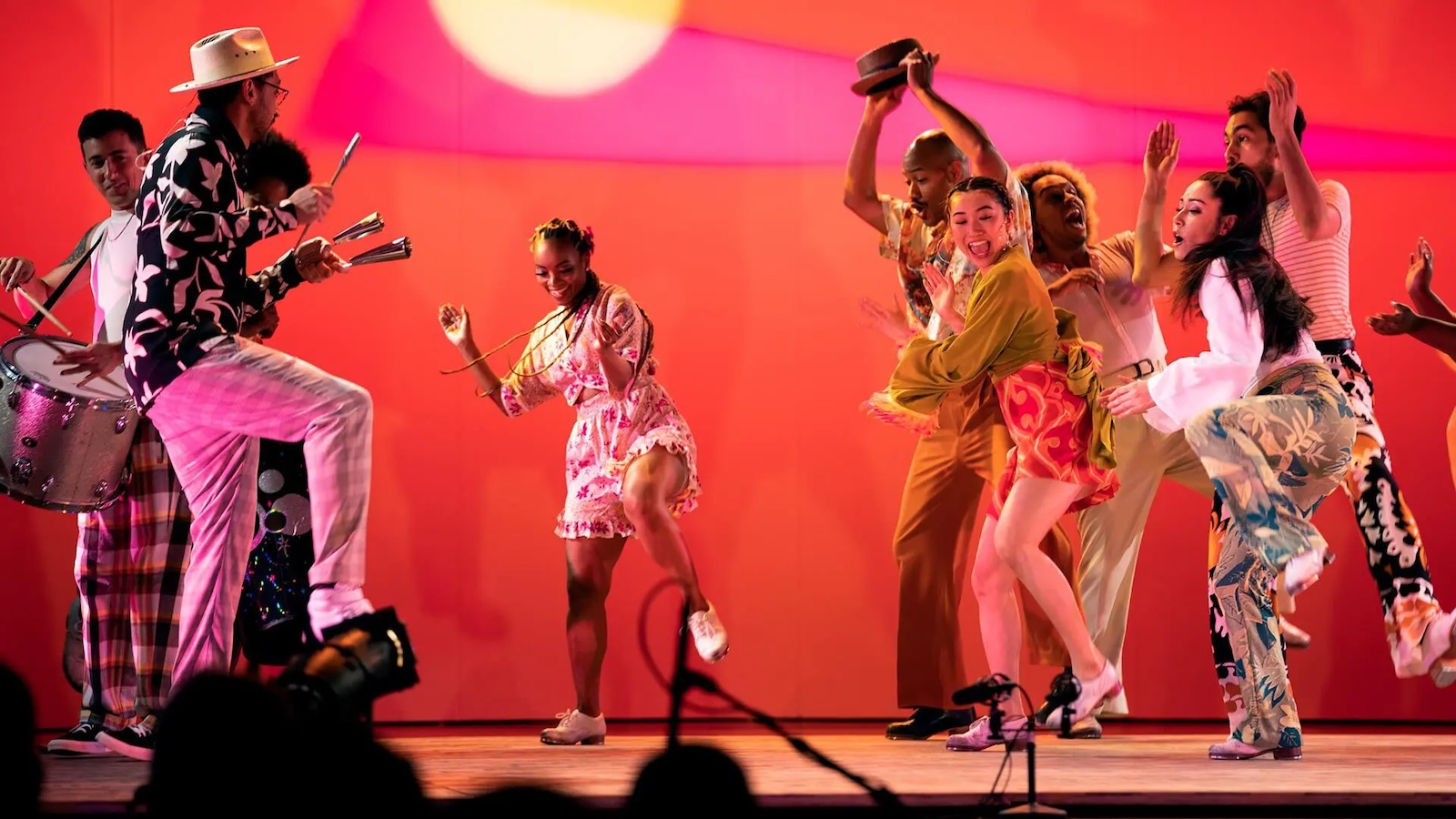Performance to ‘Tap’ Afro-Brazilian Roots of Dance
February 07, 2024

The Clarice to host joyful history lesson.
By Jessica Weiss ’05 | Maryland Today
Growing up in São Paulo, Brazil, Leonardo Sandoval veered from ballet to tap lessons at age 6, recognizing even then that his body could be an instrument to make music for both ears and eyes.
As an adult, he continues to blur the lines between dance and music. Sandoval founded a company with American composer Gregory Richardson that blends tap with Afro-Brazilian and other rhythms, and on Thursday, their Music From the Sole—including two Terp dancers—will be at The Clarice.
The show, “I Didn't Come to Stay,” takes the audience through the history of tap dance and its Afro-diasporic roots; The New York Times hailed it as “electric” and a “party.”
“We’re celebrating the joy and strength of Black dance and music,” Sandoval said. “Samba, jazz, funk, house and even Orisha dancing (which honors deities of the Yoruba people of West Africa). There’s overlap between all of these forms.”
While tap is foundational for Broadway and the movies, much of its history isn’t known. After their traditional percussion instruments were taken away, enslaved African Americans turned to percussive dancing to communicate and retain their identities. Years later in New York City, that meshed with influences from other styles, including the stepping traditions of Irish immigrants, leading to what is now known as tap, the first veritable American vernacular dance form.
Roxy King ’22, who began tapping at age 4, said she feels tap dancers speak a sort of secret language even today. “You can go anywhere all over the world and get into a room and start jamming with tap dancers and understand exactly what they mean without ever having to say a word,” said King, who earned a degree in theatre at UMD while touring and teaching tap internationally. She joined Music From the Sole in 2021.
Indeed, that’s how many of the company members—who hail from Japan, Belgium, Brazil and other nations—met one another. Gerson Lanza, an MFA student who was born in Honduras but moved to Harlem when he was 11, met Sandoval in 2010 while in Rio de Janeiro doing tap research. They reconnected years later in New York City, where Lanza was performing and teaching. Over the last two years, Sandoval has been a guest artist in Lanza’s tap classes at UMD.
Sandoval immigrated to the United States in 2013 with just $500 he had saved from busking; he chose New York for its history as the birthplace of tap. He met Richardson, an African American multi-instrumentalist, through the tap company Dorrance Dance, where he was musical director. They created Music From the Sole in 2015—with Lanza as one of their first dancers—and pride themselves on collaboration and improvisation even as the company grows.
“Each of our company members have multiplicity,” Sandoval said. “They’re not just dancers; they’re musicians, actors, storytellers, each one of them in their very unique and specific way.”
Commissioned by Works & Process at the Guggenheim in 2020, “I Didn’t Come to Stay” was first supported through a pioneering bubble residency in summer 2020, at the height of the COVID-19 pandemic. It’s received additional residency support by The Yard, Jacob’s Pillow and Chelsea Factory, and is a National Dance Project grantee with lead funding from the Doris Duke Charitable Foundation and the Andrew W. Mellon Foundation.
Sandoval said the show is a tribute to “being together, dancing together, playing music together.” He likes to call it a “Carnival fever dream,” as a reference to the joyful weeklong celebration held throughout Brazil. (Coincidentally, Carnival is celebrated this week.)
Lanza said “I Didn’t Come to Stay” brings audience members through an array of emotions.
“But the one that’s most obvious, really from the very moment you see and hear us,” he said, “is joy. It feels like you’re with a group of friends, a family.”
This story appears in Maryland Today.
Photo by Titus Ogilvie-Laing.

